Dublin, OH
2/5 M.P. Möller
Opus 8183 - 1950
Photos of the Pipes
| Pipe Photos - Page 1 | Pipe Photos - Page 2 |
Click on the photo to see a larger image
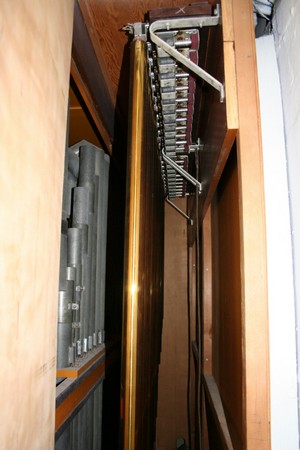 |
As we peek through the narrow opening into the side of the pipe chamber we see the chimes in the back. The hammers which strike the chimes are at the top. Crawling into the chamber without hitting the chimes is next to impossible! |
 |
Sandwiched between the big Viola pipes and the chimes are the small pipes of the 8' Viola Celeste rank. The Viola Celeste rank was an addition to the original three rank instrument. Note the colorful tuning slides on these pipes which were made from pop cans and it looks like a Krylon can as well. |
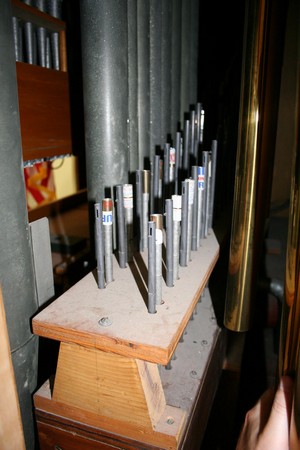 |
Here's another view of the Viola Celeste rank. This voice is actually made up of two ranks of pipes with one rank tuned slightly sharp, producing a slightly wavering pitch. This is one time you want pipes to be out of tune! Click here to listen to a sample of what it sounds like. |
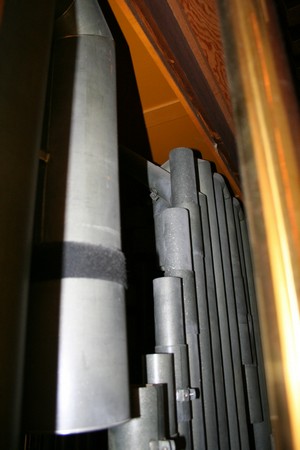 |
Here we see that several of the pipes have been mitered so that they fit in the small space. The pipe on the left is from the Gedeckt rank, extended down to 16' feet for the Bourdon stop. The pipes behind it are from the Viola rank. Note how the pipes in back fold over in a U shape. |
 |
Here is a better view of the big pipe. It's Physics wave theory at work which allows the pipe's shape to be altered but not affect the pitch. Putting a cap on the end doubles the fundamental frequency or pitch of the pipe. So this 8' long pipe speaks at the 16' length pitch. A capped pipe is generally less powerful than a full length pipe. |
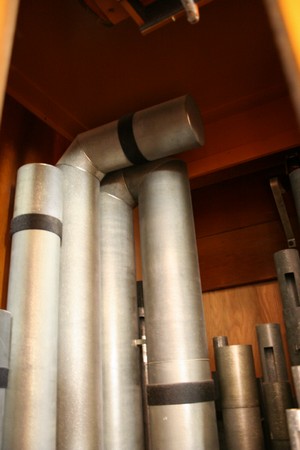 |
Here's
another look at some of the mitered pipes in the organ. |
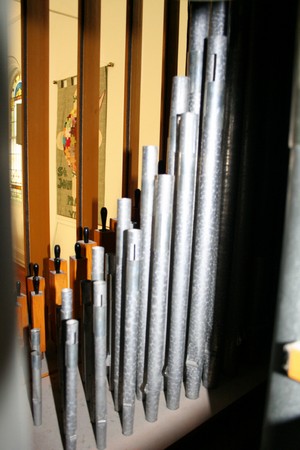 |
This gives us a view from inside the chamber looking out into the room, illustrating just how small the chamber really is. In the foreground are the 8' Viola pipes. |
| Pipe Photos - Page 1 | Pipe Photos - Page 2 |